BHUTAN – Bhutan is renowned for its rich cultural heritage, ancient history, and traditions. This country boasts remarkable landscapes and diverse wildlife, attracting a large number of tourists every year. The breathtaking rivers of Bhutan contribute to the beauty and grandeur of the nation.
The glacial rivers in Bhutan serve as vital and abundant sources of water for many of the country’s major rivers. Bhutan is often regarded as a paradise for wildlife enthusiasts and nature lovers.
Frequented by travelers from around the world, Bhutan is a place to immerse oneself in the splendor of its beautiful rivers. These rivers hold mysteries and hold a sacred place in the hearts of its people.
https://www.instagram.com/p/B43fQPYF9p-/
Here, we share the most famous rivers in Bhutan that you must explore at least once on your next trip to this country.
Wong Chhu
Wong Chhu, also known as Raidak River, is famous as a transboundary river and is a tributary of the Brahmaputra River. The entire length of the majestic Raidak River is 370 kilometers. It flows through three countries: Bhutan, Bangladesh, and India.
https://www.instagram.com/p/BDs6tMWv-Jj/
Raidak River originates from the Himalayan glaciers in Tibet. It includes several renowned and large valleys in Bhutan, such as Paro, Thimphu, and Haa. A significant aspect of western-central Bhutan, it enters Bhutan through the western border.
It ultimately flows into the Brahmaputra River. Additionally, Raidak River is highly acclaimed for adventure activities related to kayaking and boating.
Don’t miss our guide: Traveling in Bhutan.
The favorite location for these adventure sports is Paro or Thimphu, as they offer numerous options for you to choose from. Furthermore, the Wang Chhu River also has the Tala Hydropower Plant.
Torsa Chhu
Torsa Chhu, also known as Kambu Maqu, Machu, and Amo Chhu, originates from the Chumbi Valley in Tibet, China. It enters Bhutan, where it is renowned as Amo Chu. Moreover, it’s the smallest river system in the country. In its total length of 358 kilometers, 113 kilometers are in Bhutan.
It becomes an integral part of Bhutan through the western parts of the country. Torsa Chhu flows through the Dalsingpara tea estate and Jaldapara National Park. The picturesque surroundings make it an ideal destination for family outings, and its wildlife sanctuary is home to numerous species.
It eventually flows into the northern part of West Bengal, India. Furthermore, it also passes through Bhutan’s only strict nature reserve, Torsa Nature Reserve. Major towns located along its banks include Phuntsholing in Bhutan and Cooch Behar in India.
Learn more about Bhutan: List of Major Monasteries in Bhutan.
Kuri Chhu
These are undoubtedly the most famous rivers in Bhutan, and they are significant in eastern Bhutan. The river has led to the creation of a picturesque valley with rolling hills and towering mountains. Kuri Chhu emerges as a major tributary of the largest river in Bhutan.
https://www.instagram.com/p/CVIu40AFgn6
Tangkhar Chhu, Chuneygang Chhu, Kilung Chhu, Rong Chhu, Nye, and Dungkhar Chhu are the main tributaries of Kuri Chhu. Moreover, Kuri Chhu exists as a popular destination for water sports like kayaking and boating.
The river offers various water courses, including different levels of difficulty. The lower stretch is suitable for both boating and kayaking, while the middle and upper stretches can only be used for kayaking.
Jaldhaka River
Jaldhaka River, also known as Dichu River, is a transboundary river originating from Lake Bitang in southeastern Sikkim. Jaldhaka River flows through Bhutan and the districts of Kalimpong, Cooch Behar in West Bengal, and Jalpaiguri.
Jaldhaka River is formed by the confluence of three streams. Moreover, Jaldhaka River is undoubtedly one of the most wonderful destinations in the valley, where tourists can enjoy birdwatching and trekking.
Find out more: Camping in Bhutan.
Ha Chhu
Ha Chhu River is located in west-central Bhutan. It is a tributary of the Raidak River. The river begins on the southern slopes of the main Himalayan range, and its source lies to the south of the unusual Chomo Lhari mountain.
There are several rock outcrops along this river. The majority of the Ha Chhu basin is covered in mixed temperate and subalpine forests. Additionally, Ha Chhu has a unique trout fishing industry, attracting many visitors to its waters.
Paro Chhu
Known as the most famous river in western Bhutan, Paro Chhu is a tributary of the Raidak River. Flowing through the Paro Valley, it encompasses some of Bhutan’s major towns and renowned monasteries. Furthermore, the monasteries reflect the finest and highest architecture of the country.
https://www.instagram.com/p/B_ZOPyaJP6P/
Below the Dzong, Paro Chhu is spectacularly crossed by a traditional wooden bridge widely known as Nyamai Zam. Below the town, the river flows towards Bhutan’s only international airport.
See more: List of airports in Bhutan.
Furthermore, Paro Chhu is an excellent location for kayaking, and the lower section of the river is perfect for intermediate kayakers. Experienced kayakers can move on to Wong Chhu.
Tang Chhu
Tang Chhu is a tributary of Mo Chhu located in western Bhutan. The river flows from the Himalayan range near Thowadra Gompa and receives several streams from the hills. Afterward, Tang Chhu joins the Mo Chhu River. Tang Chhu features a beautiful swimming pool known as Burning Lake or Membartsho.
Moreover, Tang Chhu is well-known for salmon fishing. In fact, it’s the best destination for outdoor fishing enthusiasts.
Manas River
The Manas River in Bhutan is a transboundary river located between southern Bhutan and India. The river derives its name from a Hindu mythological serpent deity called Manasa. Additionally, the Manas River is the largest river system in Bhutan, with a length of 377 kilometers.
https://www.instagram.com/p/CE122-tHj_5/
The river boasts an incredible ecological diversity and a varied climate due to its high elevation. The Manas River valley comprises two main conservation areas: the Manas Wildlife Sanctuary and the Royal Manas National Park.

Royal Manas National Park
These areas include a biosphere reserve, an elephant reserve, and the Tiger Reserve Project. In December 1985, it was recognized as a UNESCO World Heritage Site. The river holds significant economic importance, serving as a rich natural resource for irrigation by farmers.
The river enhances the beauty of the surrounding environment. The Manas River is truly a perfect destination for those passionate about wildlife and nature.
Learn more: Bhutan’s Major Wildlife Reserves.
Mangde Chhu
Mangde Chhu, also known as the Tongsa River, flows in central Bhutan. Mangde Chhu originates in Wangdue Phodrang district in Dzongkha.
https://www.instagram.com/p/CU8_g9KKFww/
The eastern slopes of the Black Mountains are drained by the river, opening up border routes to the eastern boundaries of the Royal Manas National Park and the Black Mountain National Park. The Shemgang, Taama, Bataase, and Surey paddy fields are the main towns and areas that the Trongsa route passes through.
The Buddhist monasteries in Trongsa, Trongsa Dzong, are situated high above the Mangde Chhu. Additionally, they are connected by a beautiful chain of stone-paved courtyards, stone stairs, and corridors.
Mo Chhu
Mo Chhu, also known as the Sankosh River, is a major river in Bhutan. The river originates near the Gasa Dzong Khag district, close to the border between Bhutan and Tibet. Mo Chhu is known as Paro Tsang Chhu when it meets the Pho Chhu. This confluence takes place near Punakha Dzong in Punakha District.
In the country, these confluences are not considered auspicious, and three chortens (Buddhist shrines) were built to purify the negative energy. Punakha Dzong overlooks this natural river. A bridge built over it provides an excellent view of the surrounding landscape.
The riverbanks are known for their amazing wildlife and colorful flora, making a trip to Bhutan incomplete without visiting this beautiful and pristine river.
Discover more: The Beautiful Valleys of Bhutan.



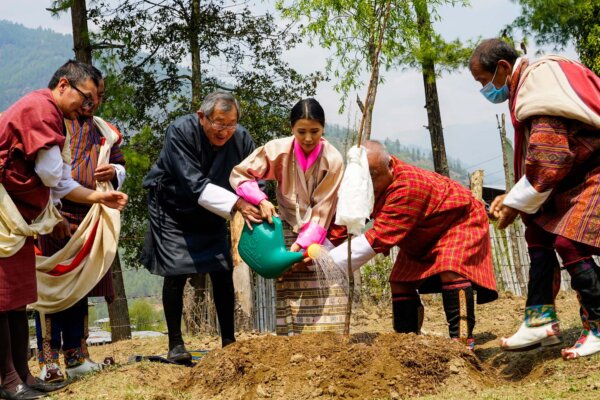
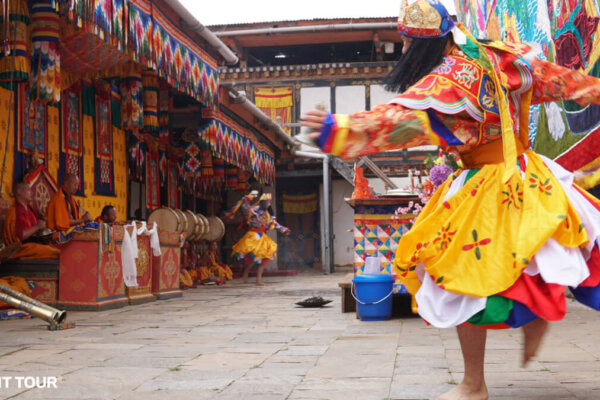
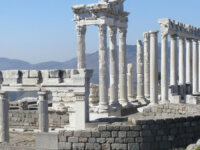
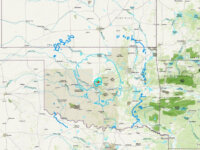

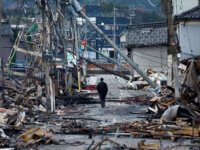


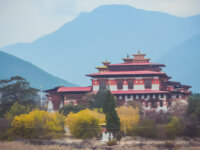



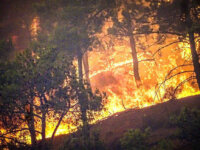
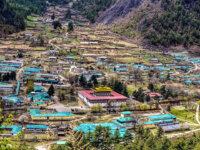
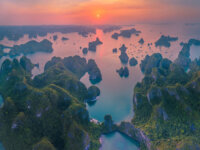
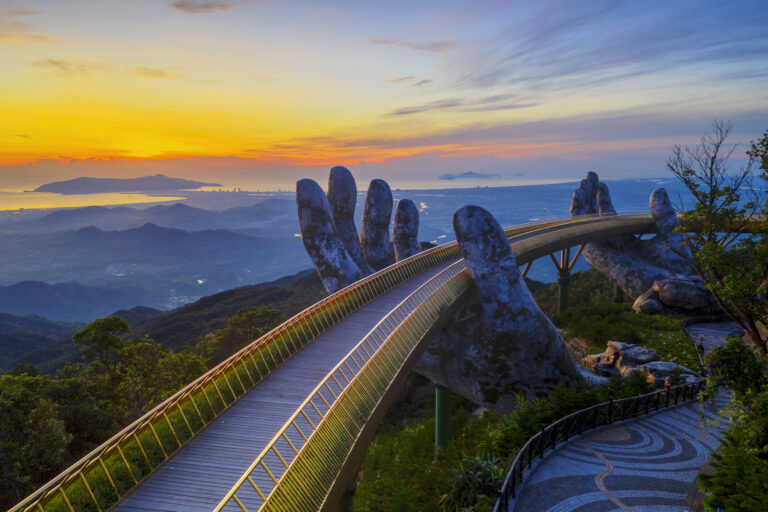
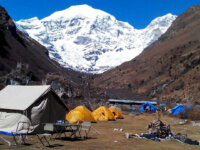

[…] Bhutan Festival Calendar 2024 – Detailed Schedule and Locations […]